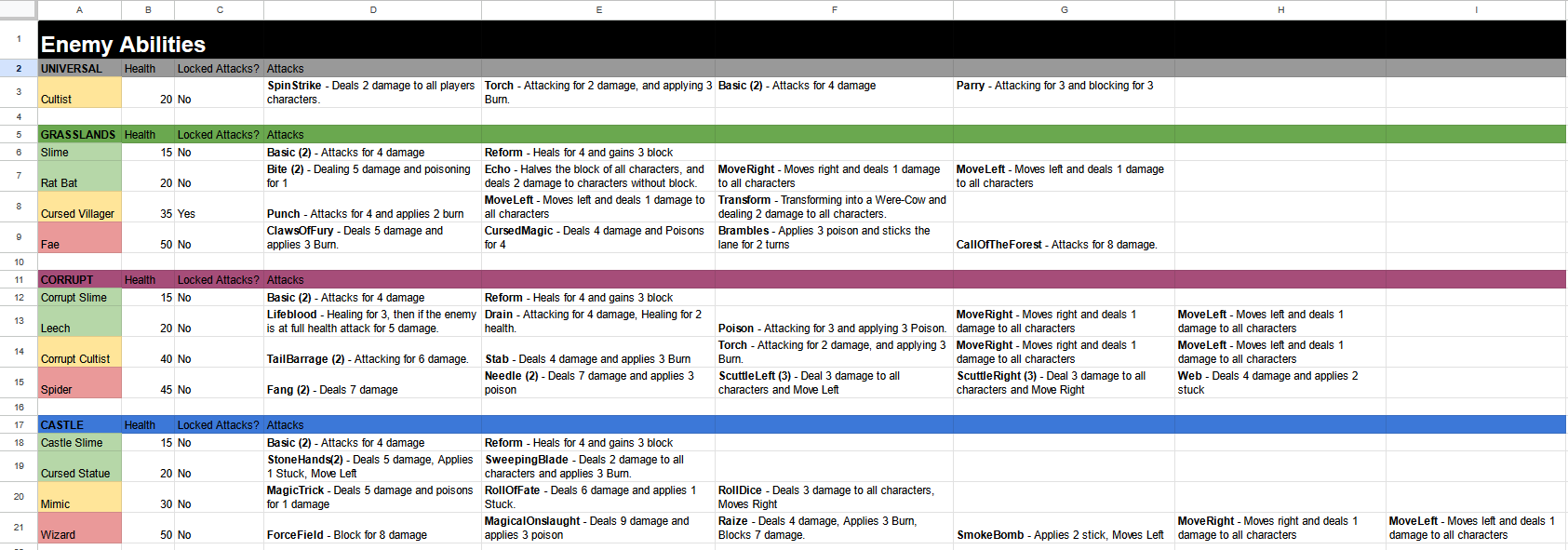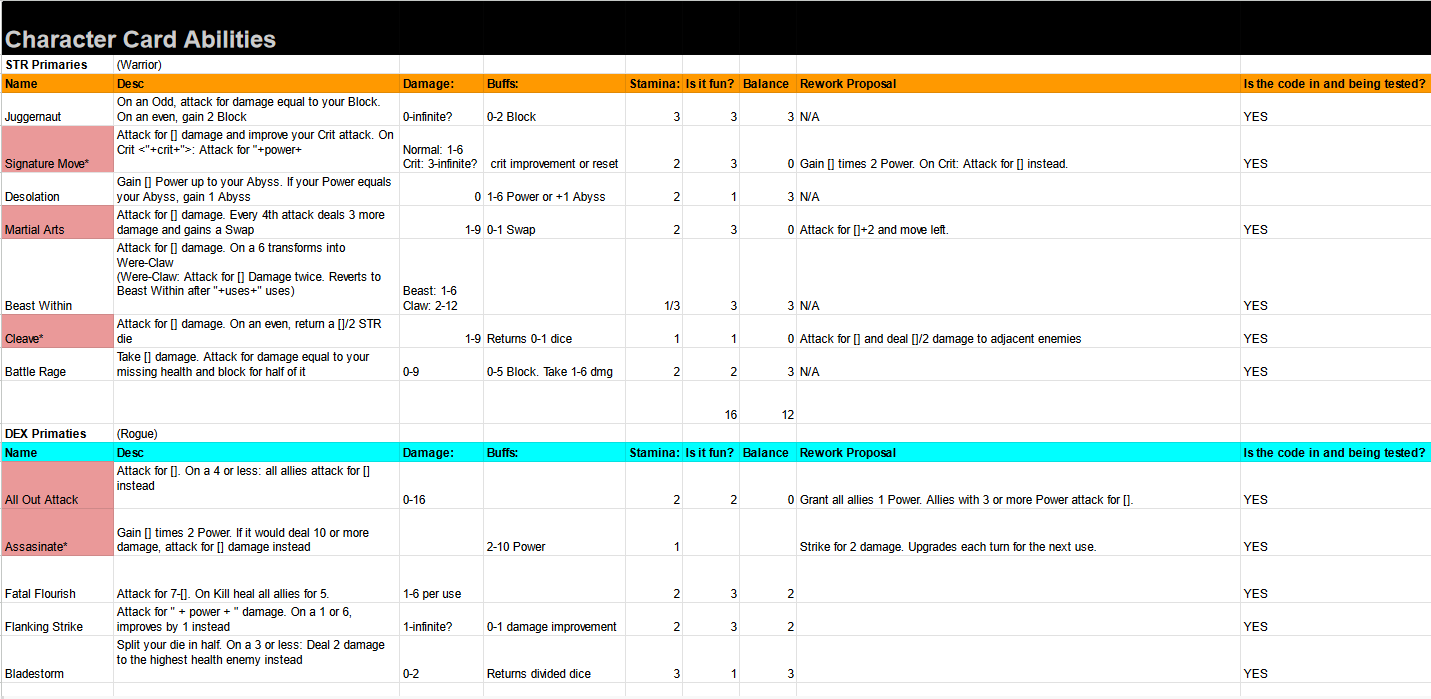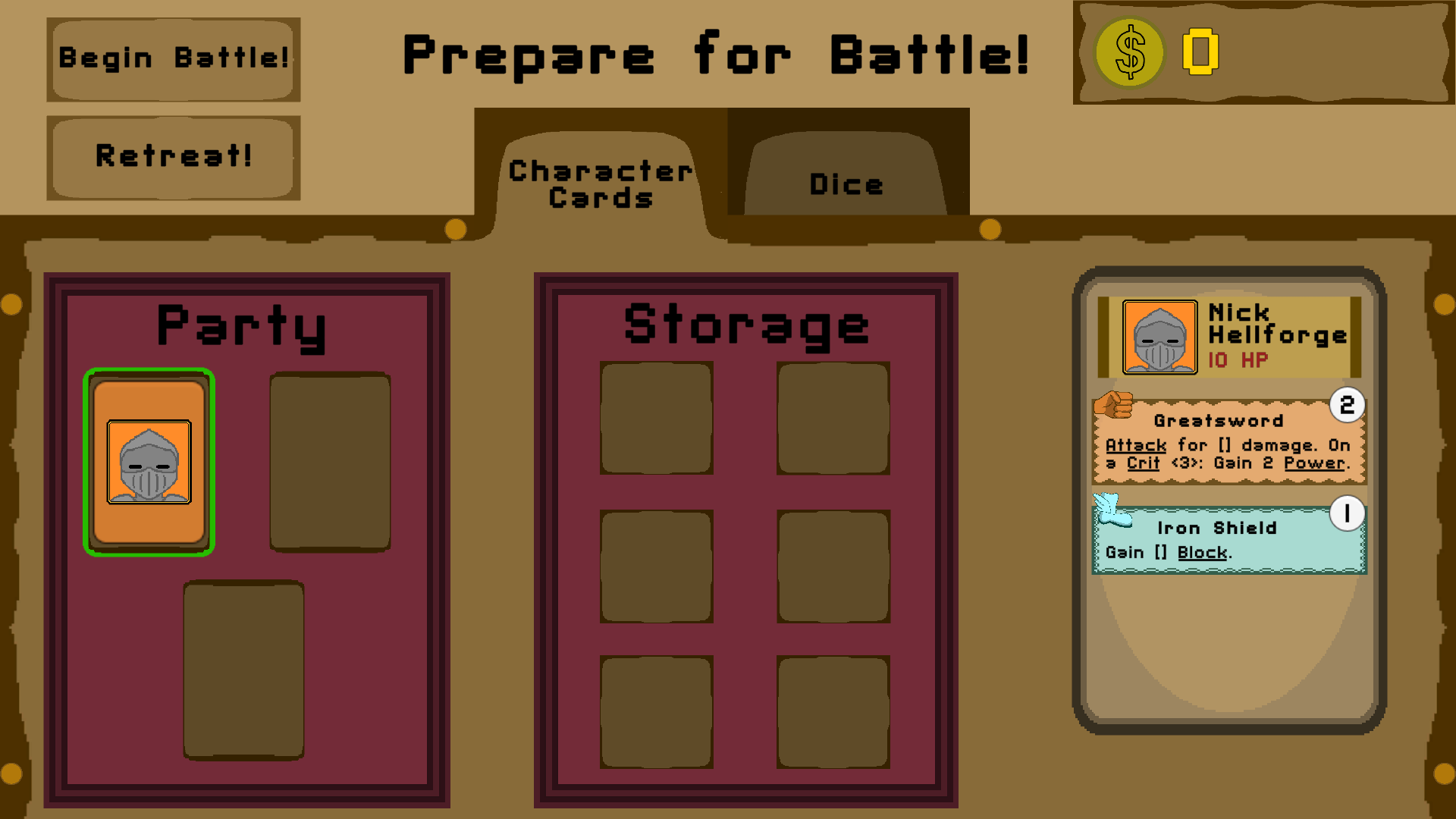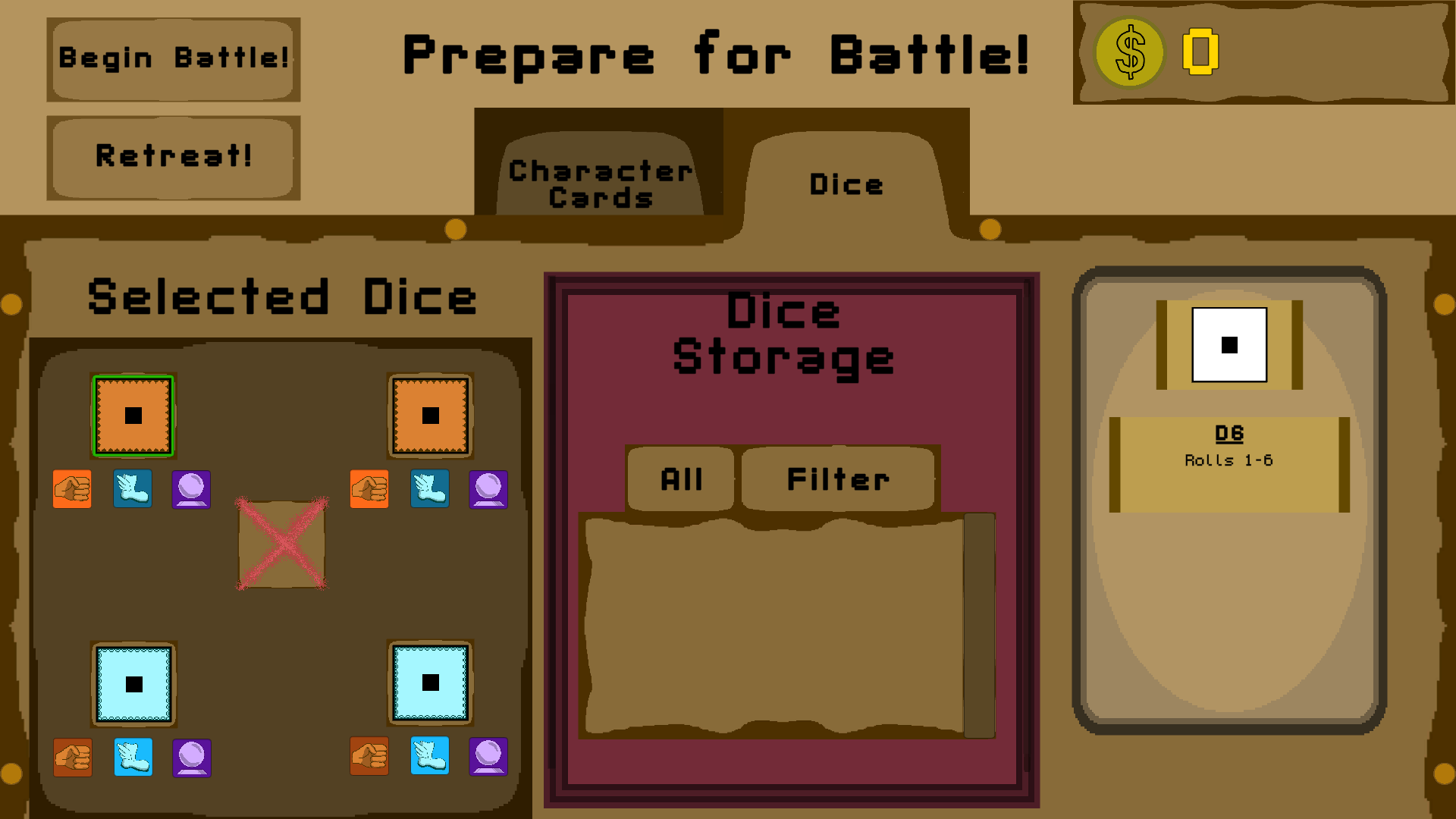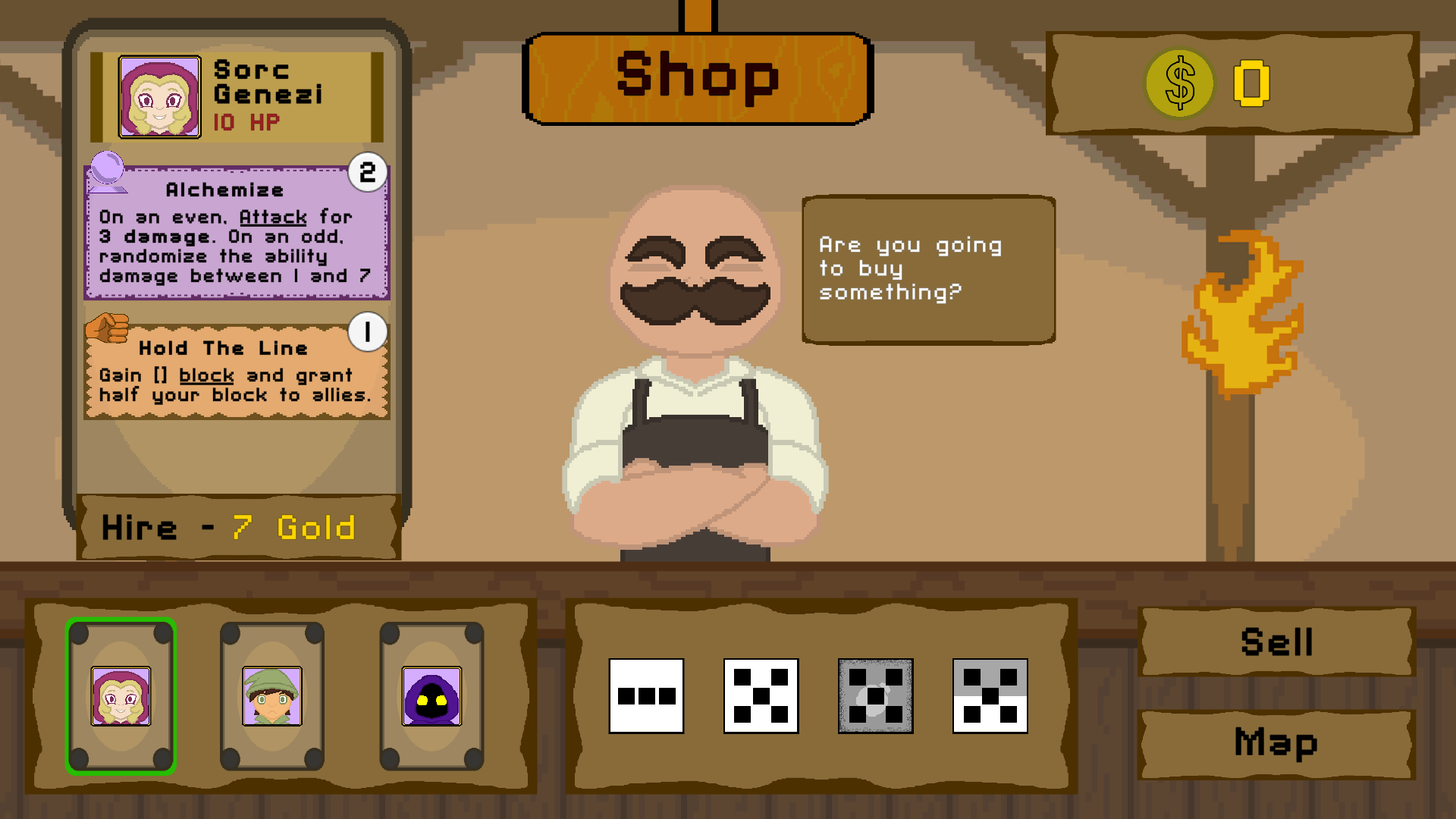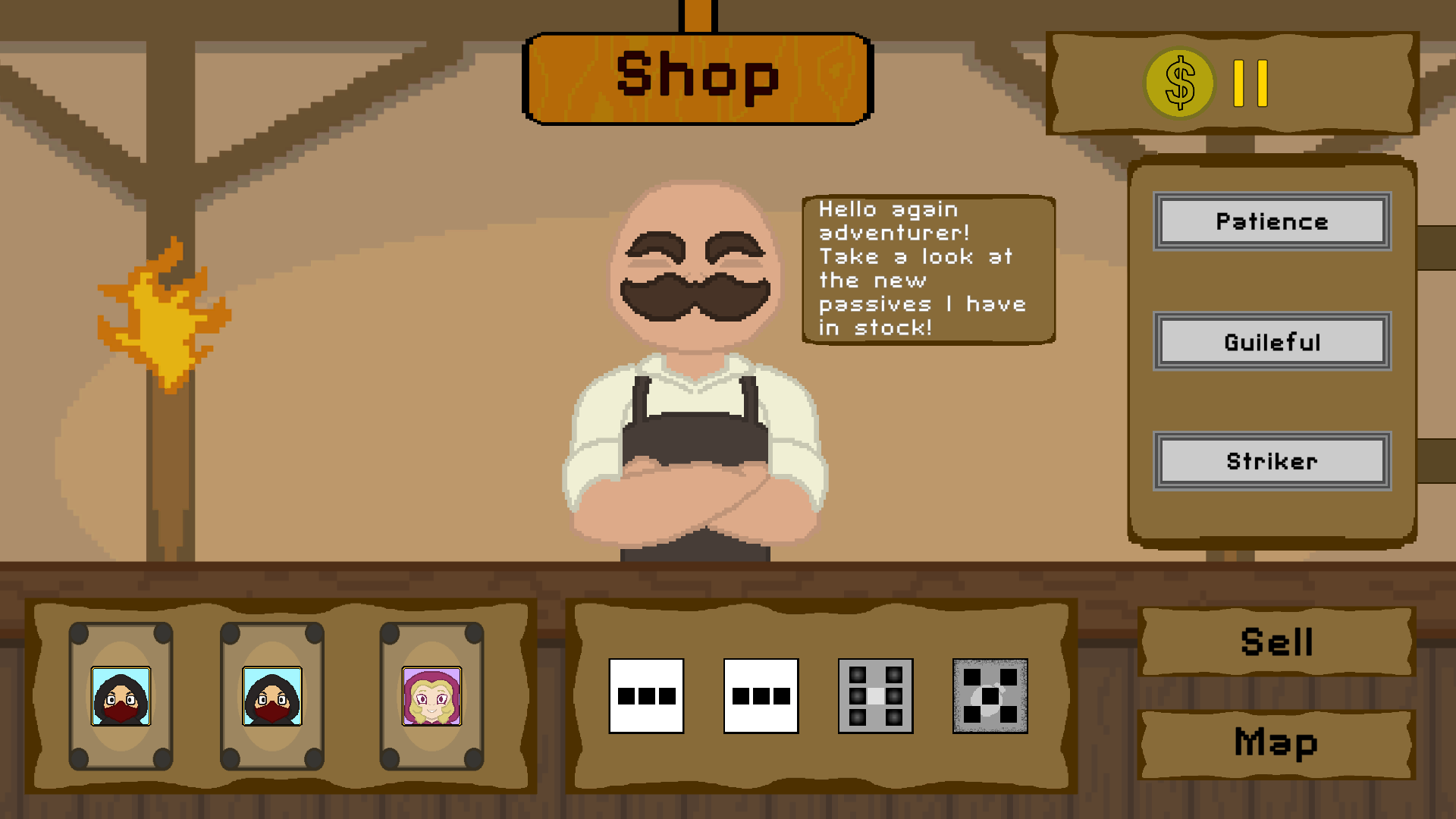Nicholas Junkas
DodgeRoll
ㅤㅤㅤㅤ
Platform:
Windows PC, Mac
Engine:
Unity
Language:
C#
Duration:
August 2022 – November 2022
Team Size: 7
Role:
Programmer, Game Designer, Sound Designer, Composer
Overview:
Taking inspiration from games like Slay the Spire and Dicey Dungeons, Dodge Roll presents a turn-based dice-building roguelike strategy game. The storyline unfolds with an evil entity known as Cat-Thulu, who has corrupted lands and unleashed monsters upon humanity. The player’s mission is to liberate these lands from Cat-Thulu’s control, leading up to the ultimate confrontation with Cat-Thulu themself.
To achieve this challenging task, players must assemble a diverse party of adventurers, including rogues, mages, and warriors. Strategic management of combat dice becomes crucial for utilizing character abilities effectively in combat scenarios. The encountered characters are randomly generated, offering a pool of over 30 abilities across various classes and diverse play styles.
Responsibilites:
Combat Design:
- Designed and implemented the combat system
- Designed the combat UI layout
- Designed various card combat abilities
General Game Design:
- Created and implemented the shop system
- Created and implemented player’s inventory system
- Designed and implemented the player leveling system
Sound Design:
- Designed and integrated all sound effects (Enemies, Character Abilities, UI, etc)
Music Composition:
- Composed most of soundtrack for the game (main menu, shop, battles, death screen)
Combat System Process:
As a member of DodgeRoll’s combat design team, crafting an enjoyable and captivating combat system posed to be a significant challenge. Early in the development process, a key discussion revolved around whether the game’s combat should be turn-based or real-time. Ultimately, I advocated for a turn-based approach for a couple of specific reasons. Firstly, this project marked the first collaboration involving more than five team members. Drawing from my experience with role-playing games featuring real-time combat, I observed that such systems tended to be more intricate compared to a well-designed and straightforward turn-based system. Additionally, I believed that a turn-based system would enhance player accessibility, aligning with the project’s goal of creating a game suitable for all skill levels. By allowing players ample time to strategize during combat, we could enable the pace of the battle to be contingent on the player’s input speed.
The next step was determining what the player would experience at the systems core. One of the main inspirations the team turned to for the combat system of this game was Dicey Dungeons. The team decided to take the idea of using dice as a means to activate abilities from cards. Except in this instance, the cards would represent the players party and party member could invoke their action for a certain amount of uses per turn. Each ability would behave differently depending on the number used from the dice.
Once I understood the components to be incorporated into the combat system, my first two tasks on the team involved designing the UI layout for the combat space and implementing the base structure for the tactical combat system flow. Even though I was already tasked with implementing the back end for the combat system, I took the initiative and volunteered to concept a UI layout for the combat as well. There was no dedicated UI designer on my team and I knew I could at least get something working.
Another major task I had with the combat system was balancing the abilities for the character cards and enemies. I utilized spreadsheets to better visualize all the information for the various abilities and to help compare data that needed to be adjusted.
Inventory System Process:
Shop System Process:
The last system I implemented and designed was the shop system. In DodgeRoll, every level features a shop offering superior quality goods compared to the previous ones. One issue I found with the shops in particular was balancing the goods available. Originally, items were completely randomly generated throughout all the game’s shops, however, having the shops select from a specific pool of items per level ensured a more balanced gameplay. Additionally, as players progress through later levels and encounter shops, they will discover new types of items. I added this feature to add more variety to different and expand the different play styles available within the game. For example, I introduced passive ability items in the second shop that can enhance the abilities of the player’s existing character cards.
Soundtrack:
When I first started this project, I did not expect that I’d also be the individual responsible for creating the sound effects and music for the game. However, without anyone having previous knowledge of sound design and a desire for the game to have a unique array of sounds, I decided to step up to the role. On top of all my other duties in the project, I dedicated extra time to the creation of multiple themes for the different levels and sound effects to accompany various aspects of the game.
These are the songs I composed and later produced within FL Studio:


